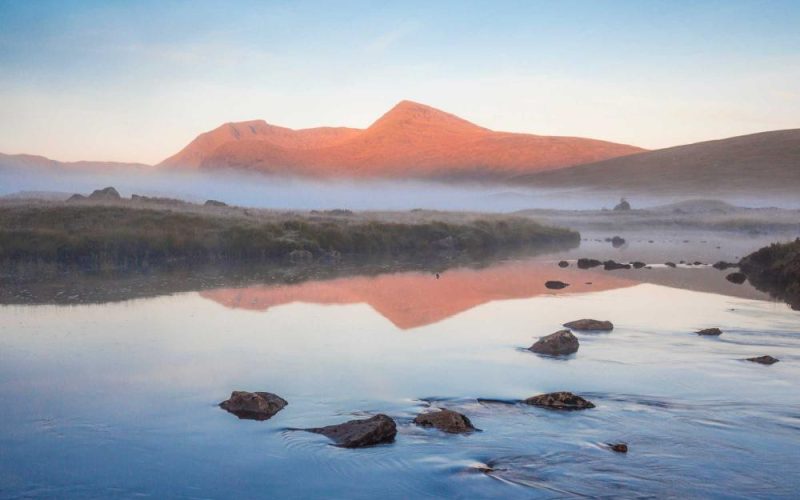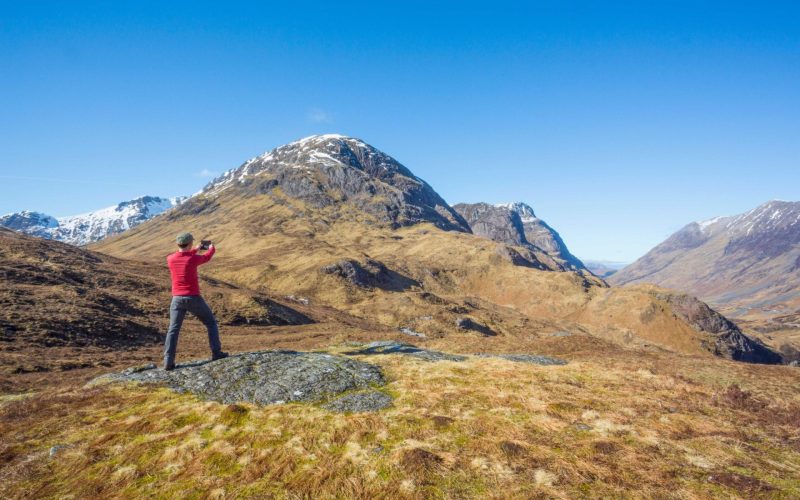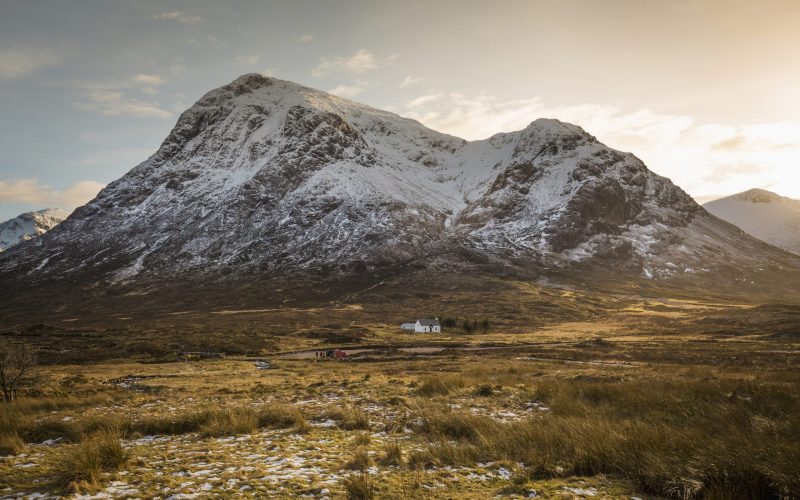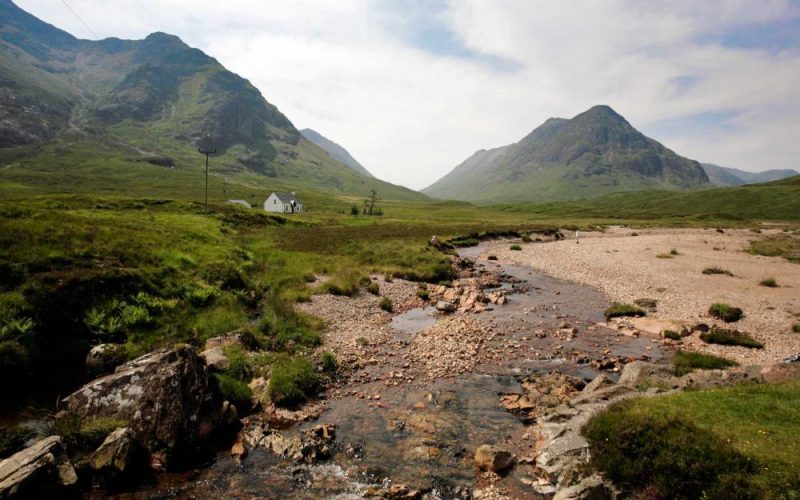






£525
£550
£575
8 hours
Obtain quote
Castle Stalker is one of the most photographed castles in Scotland. The MacDougalls lost the castle when they were defeated by King Bruce at the Pass of Brander in 1308. It was then passed to the Stewards in 1388. King James IV of Scotland was a frequent visitor who used the castle as a base for his passion of hunting and hawking. In 1640 the castle passed to the Campbell’s of Airds as a result of a drunken wager. The Stewards regained the Castle briefly 1689 before the Campbell’s reoccupied the fortress after a lengthy siege. The roof collapsed in 1840. In 1908 Charles Stewarts purchased the shell before it was sold again to Duncan Stewart in 1947. In 1965 Lt Col Stewart Allward bought and renovated the castle. In 1975, I played an extra and joined the cast of Monty Python to assault ‘castle aargh’ in pursuit of the Holy Grail.
The Massacre of Glencoe was the most treacherous act in the history of inter-clan disputes in the highlands. There have been bigger inter-clan hostility with larger death tolls but this was a ‘murder under trust’. The MacDonalds hosted the Campbells for 2-weeks under the guise that there was insufficient accommodation to barrack them in Fort William. On the 13 Feb 1792 the order came through to put all to the sword. The Campbell’s slaughtered 38 members of the MacDonald clan with a further 40 women and children dying of exposure as they took to the hills to escape in the full depth of winter. Visit the MacDonald monument, Henderson stone and view the Isle of Munde from the shoreline.
This expansive moor is one of the last remaining wildernesses in Europe. It is 50sq miles of beautiful outdoor space. Essentially, the elevated plateau (over 1000ft) comprises of a blanket bog, lochans, rivers and rocky outcrops. As the ice age retreated, Rannoch Moor was the last location in the UK where glaciers existed.
Loch Etive Loch Etive can be reached via a 14 mile B-road used by James Bond in Skyefall. The Buachaille Etive Mor (the Shepherd’s Mountain) guards the entrance to the glen where the road meanders westerly through the valley until you reach the loch. During the early part of the 20th century a steamer boat would carry tourist to the head of Glen Etive where they would be met by a coach and taken through Glencoe to Ballaulish Railway Station. From there they would complete their circular journey to Oban by train.
Leave the A82 at the Bridge Of Orcky and cross the humpbacked bridge built by Major Caulfield in 1751. This was part of General Wade road building effort to promote the swift movement of government troops to quell the Jacobite rebellion. The single track road meanders through Caledonian pine trees to the west of Loch Tulla with Forrest Lodge beyond. En route you pass Inveroran Hotel which pre-dates the bridge (1708) and provides welcome refreshments for those undertaking the West Highland Way trail. The Black Mount Estate house can be seen across loch Tulla, the highland home to James Bond’s author Ian Fleming.
Glen Orchy is a beautiful and popular location for walkers, kayakers and fishermen. The glen is 11 miles long and dominated by high mountains, Caledonian pine trees and the majestic river Orchy. The lower river meanders through the glen where the broad shingle reach is scattered with washed-up trees from earlier floods. The upper Orchy is more channelled, sculpting its route through the bedrock and tumbling over the rock steps creating dramatic waterfalls. A former home to the MacGregor’s until they were outlawed. Rob Roy’s mother was born in the glen.
This kirk is easily mistaken as an ancient medieval church on the edge of Loch Awe but St Conan’s was only completed in 1930. Walter Douglas Campbell was inspired to build the church as his mother often complained about the long journey to Taynuilt for worship. Walter, an eccentric architect has created the most quirky, atmospheric and intriguing ecclesiastical building in Scotland. It has recently been shortlisted as one of the top ten best Scottish buildings constructed in the past 100 years.
Castle Stalker is one of the most photographed castles in Scotland. The MacDougalls lost the castle when they were defeated by King Bruce at the Pass of Brander in 1308. It was then passed to the Stewards in 1388. King James IV of Scotland was a frequent visitor who used the castle as a base for his passion of hunting and hawking. In 1640 the castle passed to the Campbell’s of Airds as a result of a drunken wager. The Stewards regained the Castle briefly 1689 before the Campbell’s reoccupied the fortress after a lengthy siege. The roof collapsed in 1840. In 1908 Charles Stewarts purchased the shell before it was sold again to Duncan Stewart in 1947. In 1965 Lt Col Stewart Allward bought and renovated the castle. In 1975, I played an extra and joined the cast of Monty Python to assault ‘castle aargh’ in pursuit of the Holy Grail.
The Massacre of Glencoe was the most treacherous act in the history of inter-clan disputes in the highlands. There have been bigger inter-clan hostility with larger death tolls but this was a ‘murder under trust’. The MacDonalds hosted the Campbells for 2-weeks under the guise that there was insufficient accommodation to barrack them in Fort William. On the 13 Feb 1792 the order came through to put all to the sword. The Campbell’s slaughtered 38 members of the MacDonald clan with a further 40 women and children dying of exposure as they took to the hills to escape in the full depth of winter. Visit the MacDonald monument, Henderson stone and view the Isle of Munde from the shoreline.
This expansive moor is one of the last remaining wildernesses in Europe. It is 50sq miles of beautiful outdoor space. Essentially, the elevated plateau (over 1000ft) comprises of a blanket bog, lochans, rivers and rocky outcrops. As the ice age retreated, Rannoch Moor was the last location in the UK where glaciers existed.
Loch Etive Loch Etive can be reached via a 14 mile B-road used by James Bond in Skyefall. The Buachaille Etive Mor (the Shepherd’s Mountain) guards the entrance to the glen where the road meanders westerly through the valley until you reach the loch. During the early part of the 20th century a steamer boat would carry tourist to the head of Glen Etive where they would be met by a coach and taken through Glencoe to Ballaulish Railway Station. From there they would complete their circular journey to Oban by train.
Leave the A82 at the Bridge Of Orcky and cross the humpbacked bridge built by Major Caulfield in 1751. This was part of General Wade road building effort to promote the swift movement of government troops to quell the Jacobite rebellion. The single track road meanders through Caledonian pine trees to the west of Loch Tulla with Forrest Lodge beyond. En route you pass Inveroran Hotel which pre-dates the bridge (1708) and provides welcome refreshments for those undertaking the West Highland Way trail. The Black Mount Estate house can be seen across loch Tulla, the highland home to James Bond’s author Ian Fleming.
Glen Orchy is a beautiful and popular location for walkers, kayakers and fishermen. The glen is 11 miles long and dominated by high mountains, Caledonian pine trees and the majestic river Orchy. The lower river meanders through the glen where the broad shingle reach is scattered with washed-up trees from earlier floods. The upper Orchy is more channelled, sculpting its route through the bedrock and tumbling over the rock steps creating dramatic waterfalls. A former home to the MacGregor’s until they were outlawed. Rob Roy’s mother was born in the glen.
This kirk is easily mistaken as an ancient medieval church on the edge of Loch Awe but St Conan’s was only completed in 1930. Walter Douglas Campbell was inspired to build the church as his mother often complained about the long journey to Taynuilt for worship. Walter, an eccentric architect has created the most quirky, atmospheric and intriguing ecclesiastical building in Scotland. It has recently been shortlisted as one of the top ten best Scottish buildings constructed in the past 100 years.